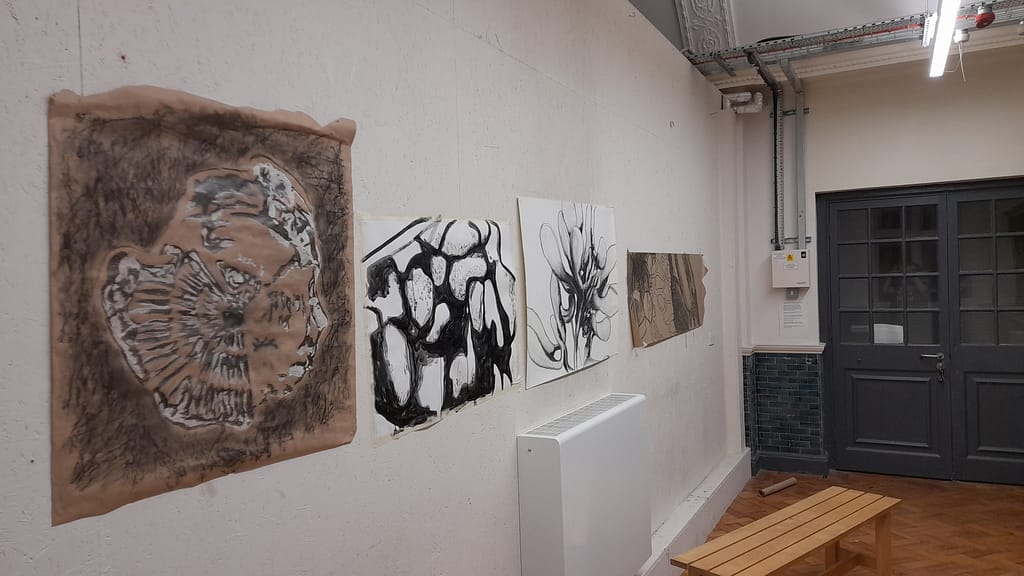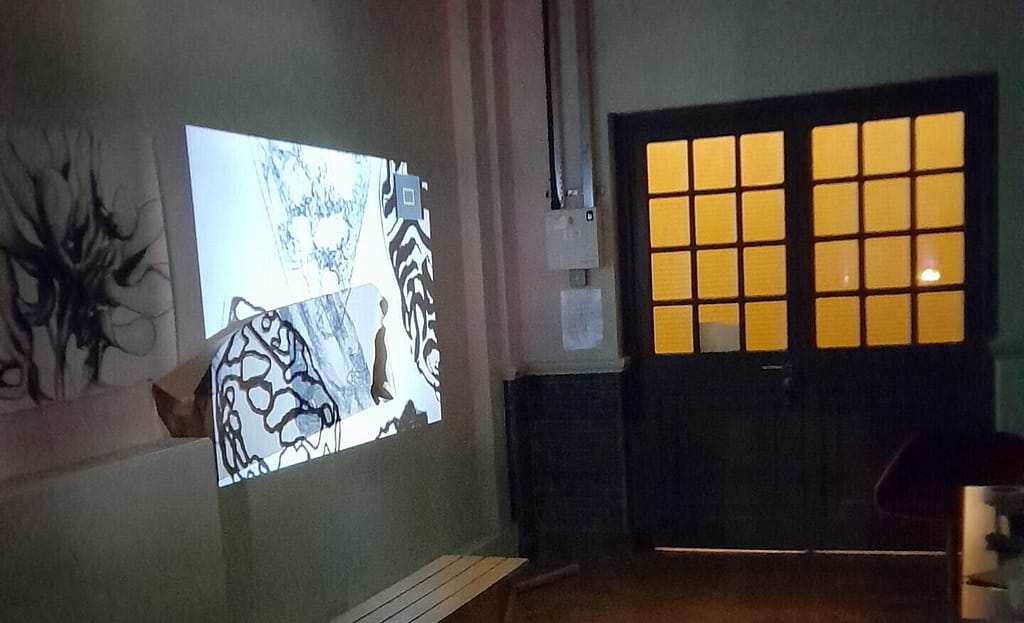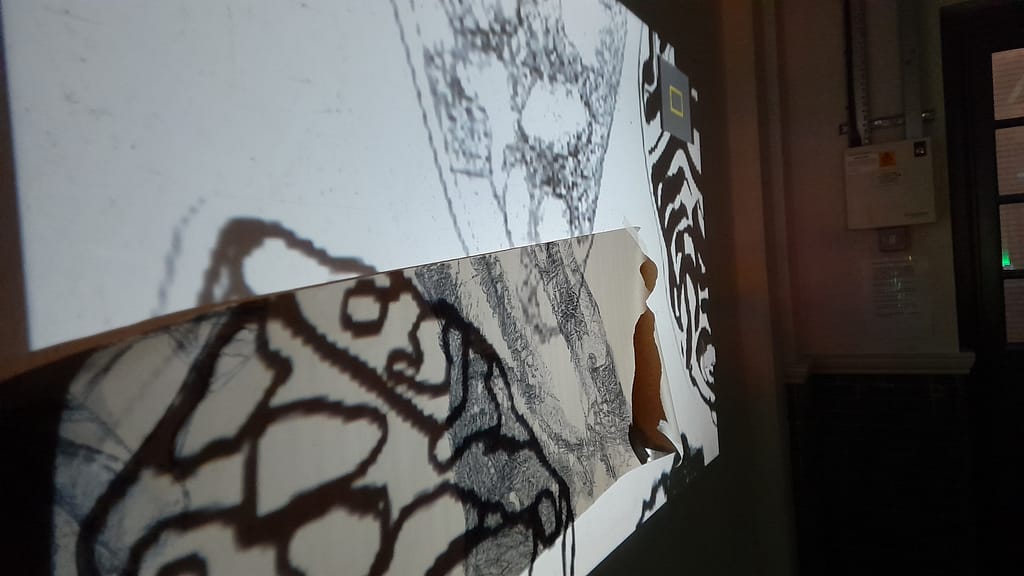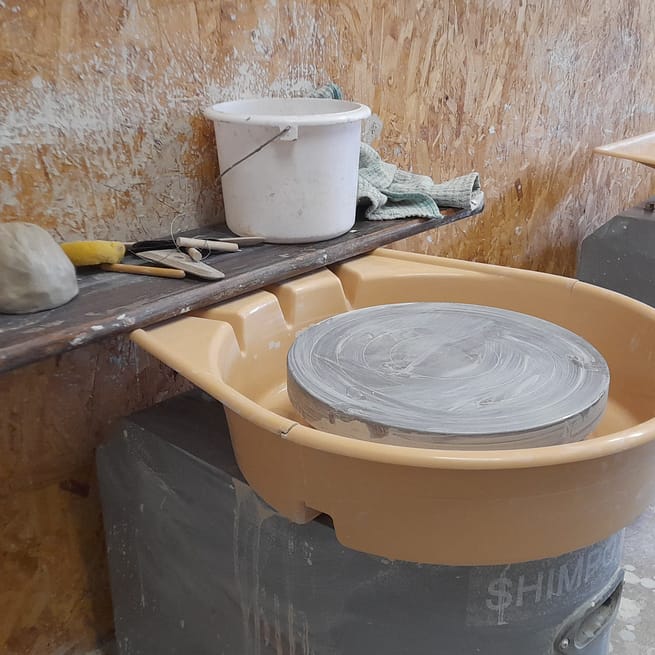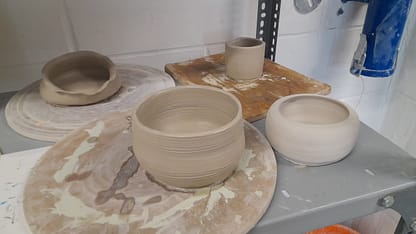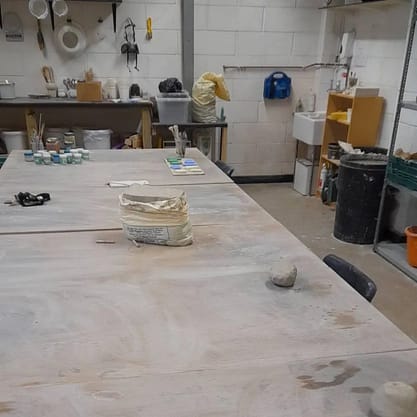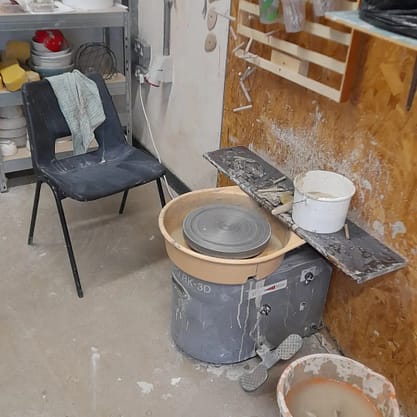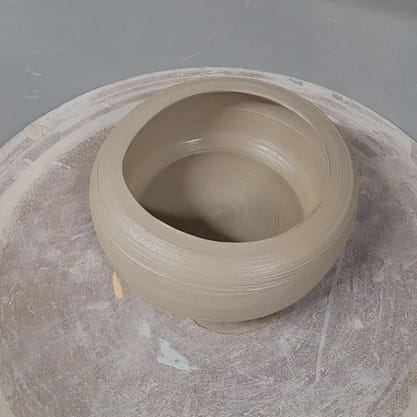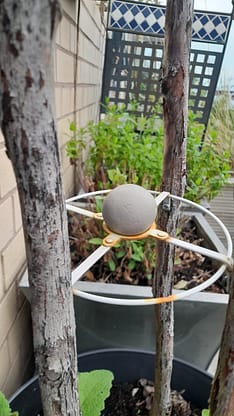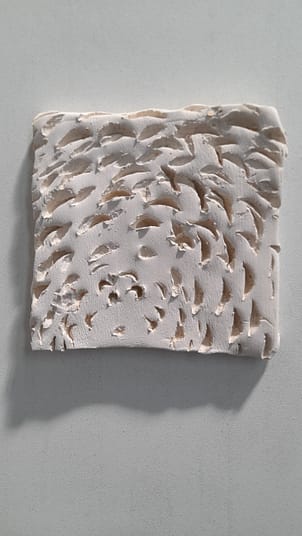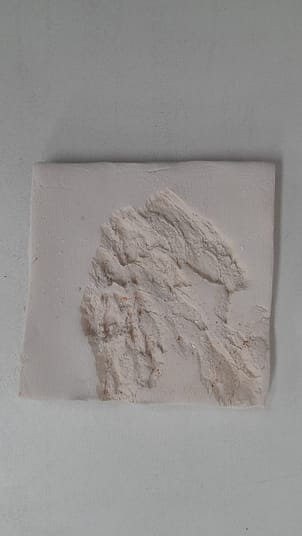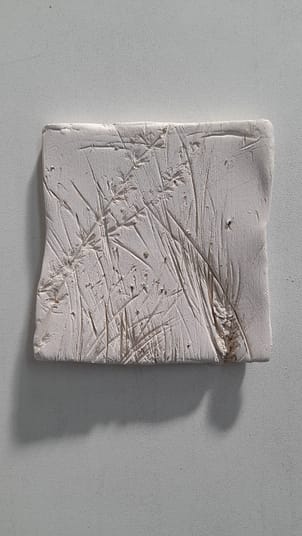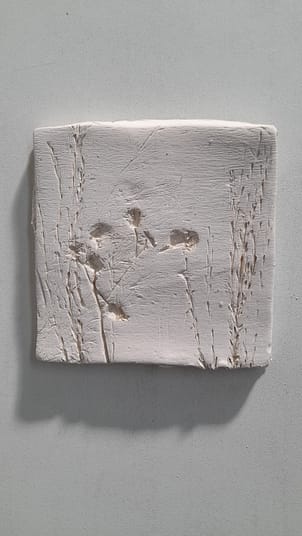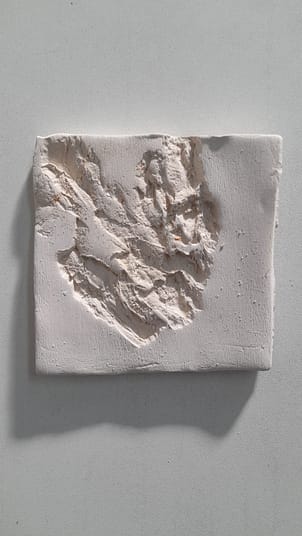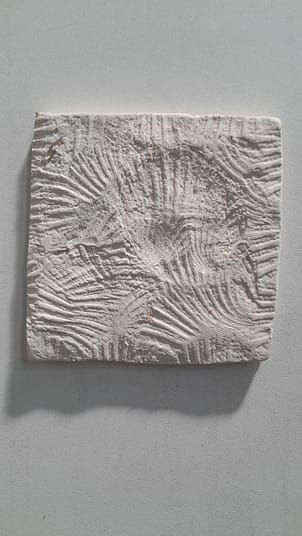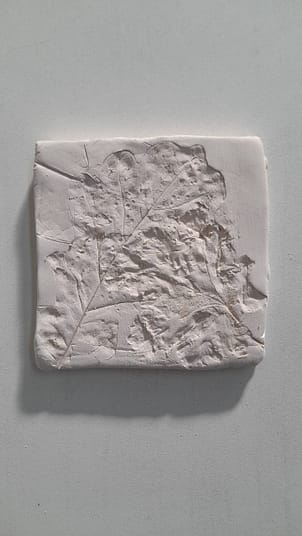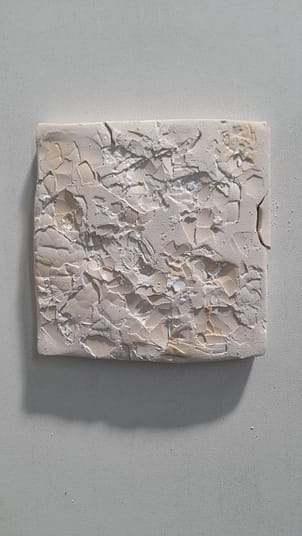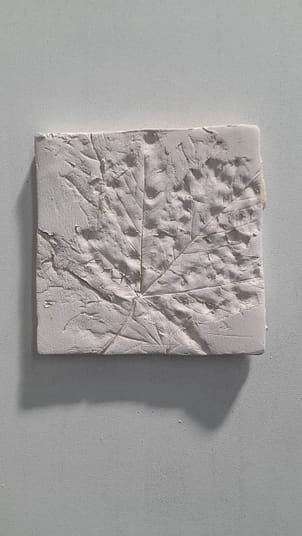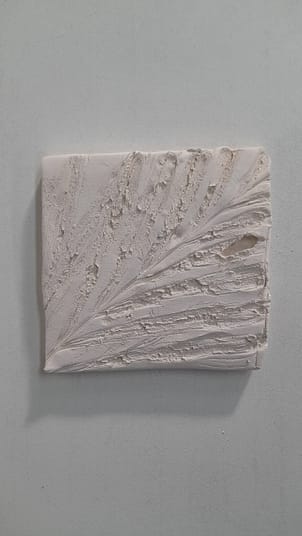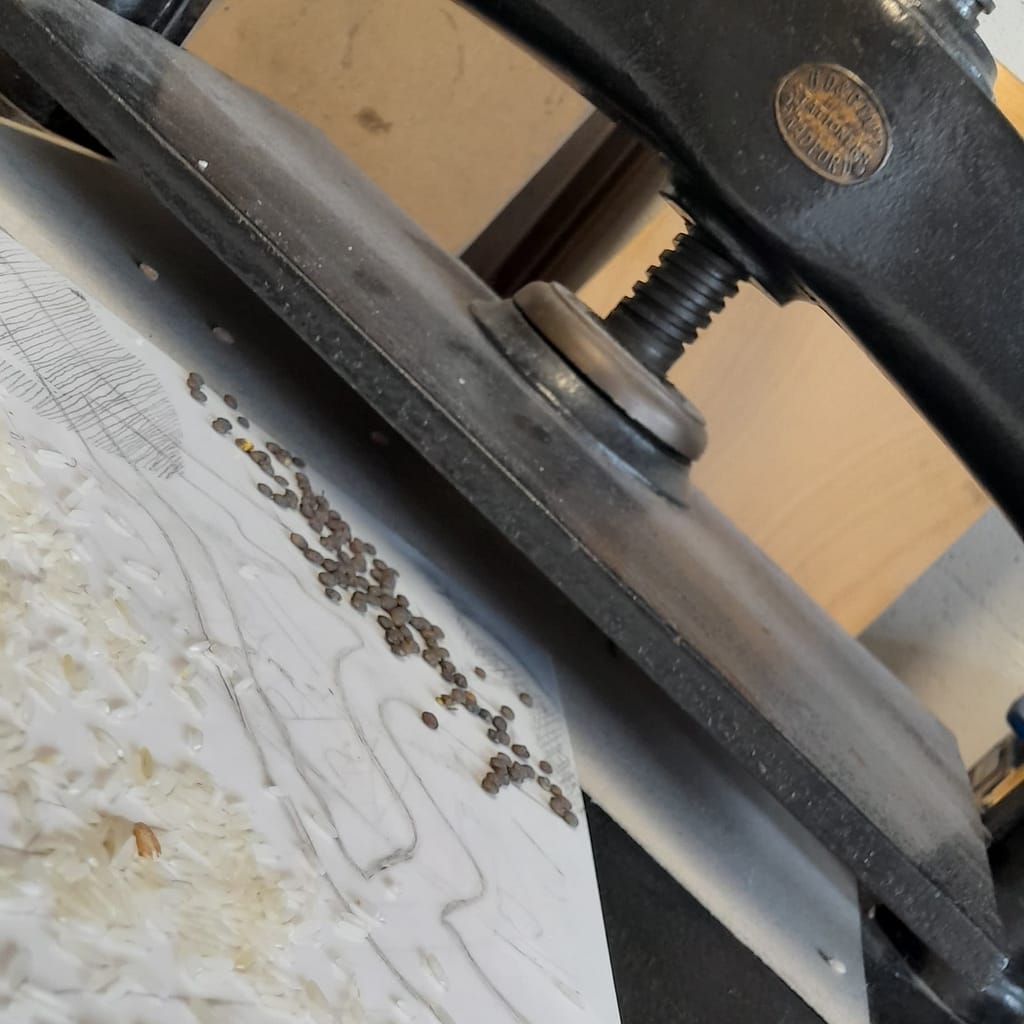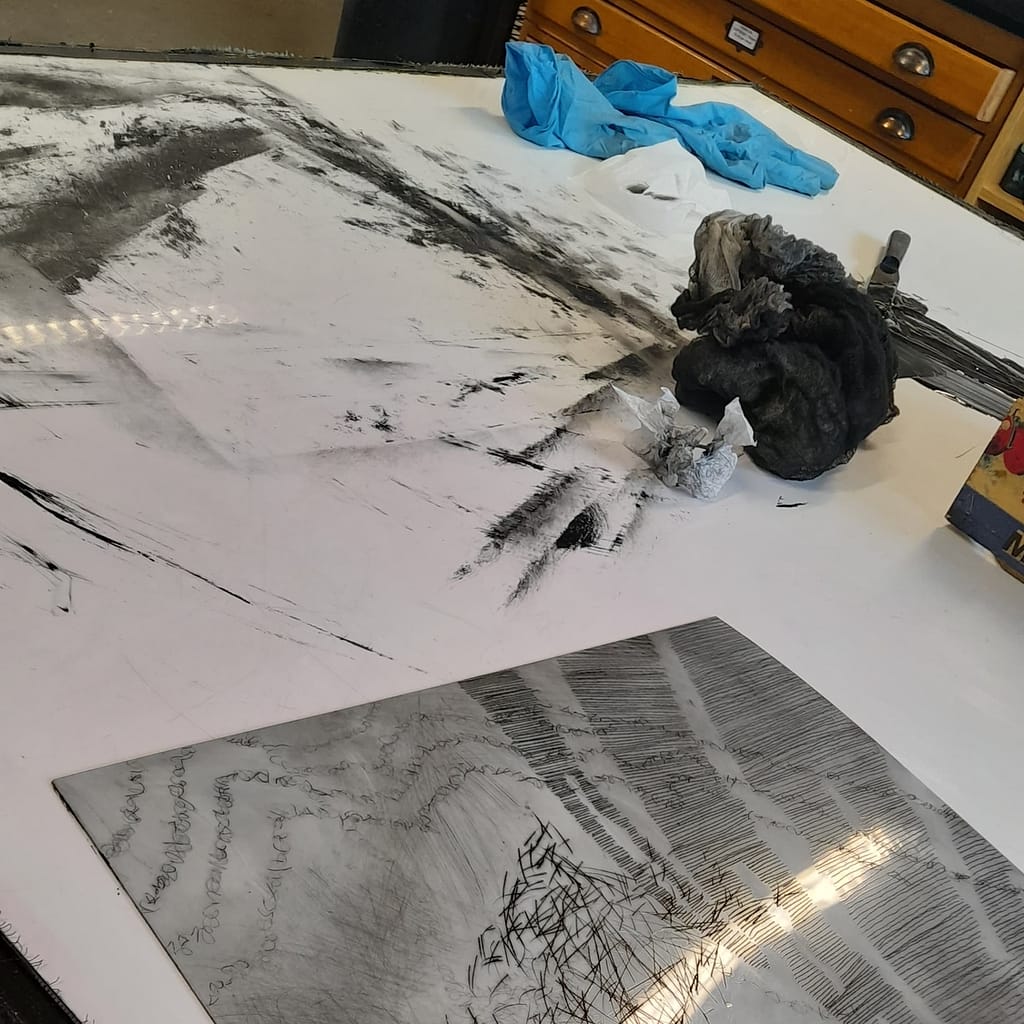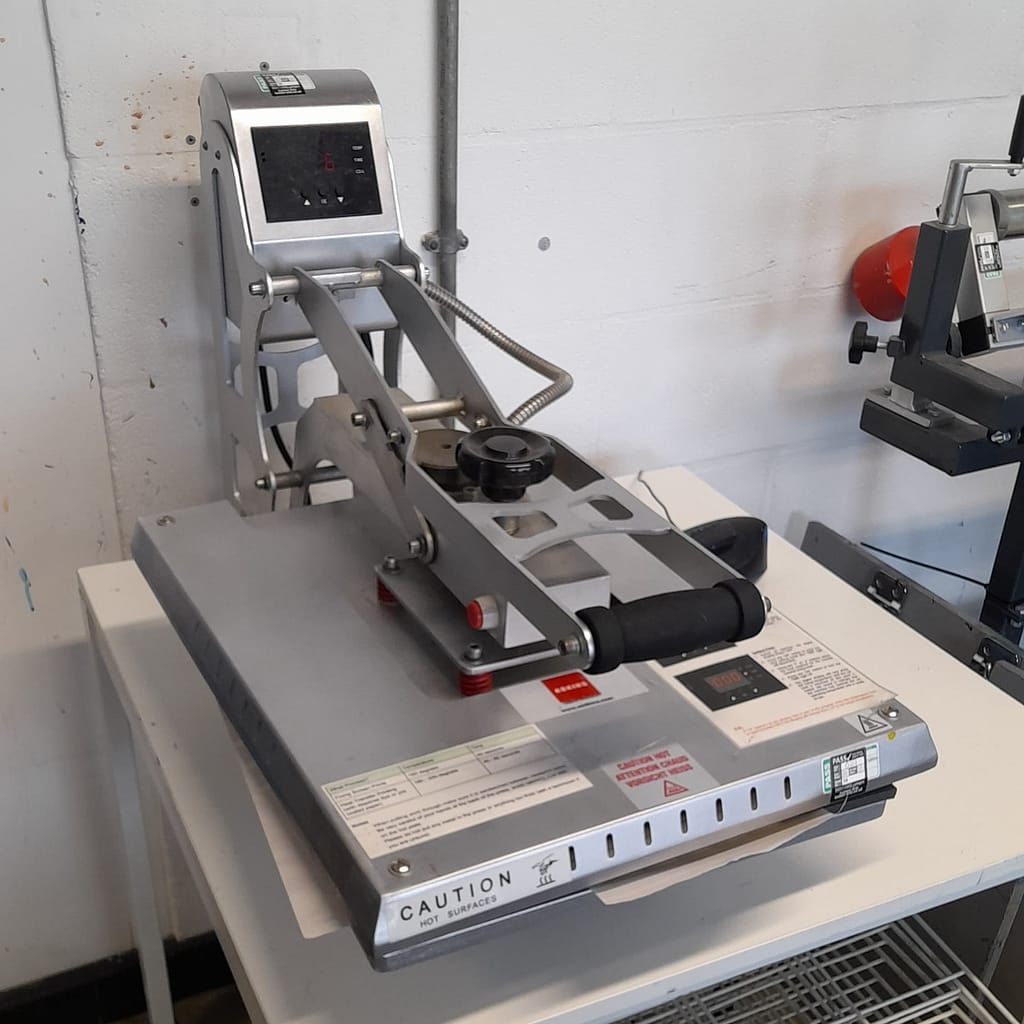CONNECTS TO THEORY CODES: GDGS01, EPP01, HNH01, HNH02 and STEK01 (see Meta-post)
Back in 2019, I applied for a thing to do with the Art House in Wakefield (I can’t remember exactly what it was now) and although I didn’t get it, they were interested in my work and offered me a 2 week micro-residency instead.
This was due to take place in 2020, but – pandemic, obviously, and was instead arranged for July 2022. My goal for this micro-residency was to produce a body of work that would be the basis/beginnings of Human:Non-Human Collaborations (HNHCCs) – which a theme explored during my first year of my MA. Key influences for this particular train of thought, include Barrett’s (2014, cited in Golańska and Kronenberg’s, 2020) argument that natural phenomena are independent agencies and can be ‘active’ cocreators of knowledge, and Magrane’s (2015) suggestion that philosophical-creative potentialities between human collaboration with the other-than-human artistic collaboration. This synthesization of theory, as explored in more depth in my literature review from earlier in the year (The Geopoetics of Drawing), alongside the development of my own portfolio of work, led to this notion of HNHCCs, which I explored in more detail in a later journal article (‘Ethical Art Making – Human:Non-Human Creative Collaborations), which – because of this residency, really – focused on the ethics that surround the making of these HNHCCs.
I was reading around in preparation for this article at the time of the Micro-Residency (even though I didn’t know exactly what my focus would be), so I had all this rich theoretical research fresh in my mind during the making practice.
I was offered a studio space, which became a base for doing some larger scale drawings in the first week.
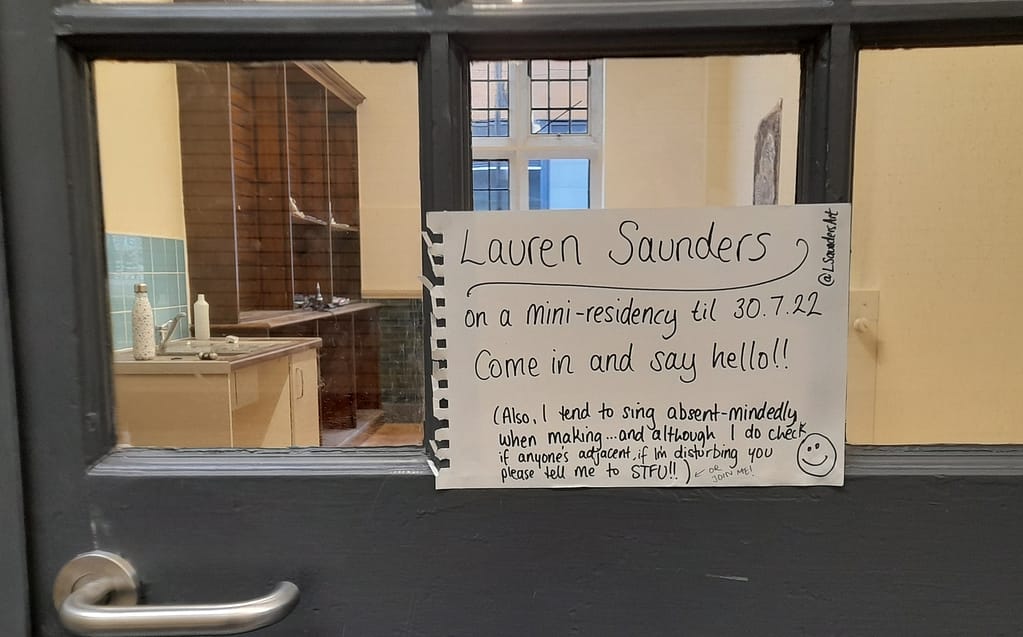
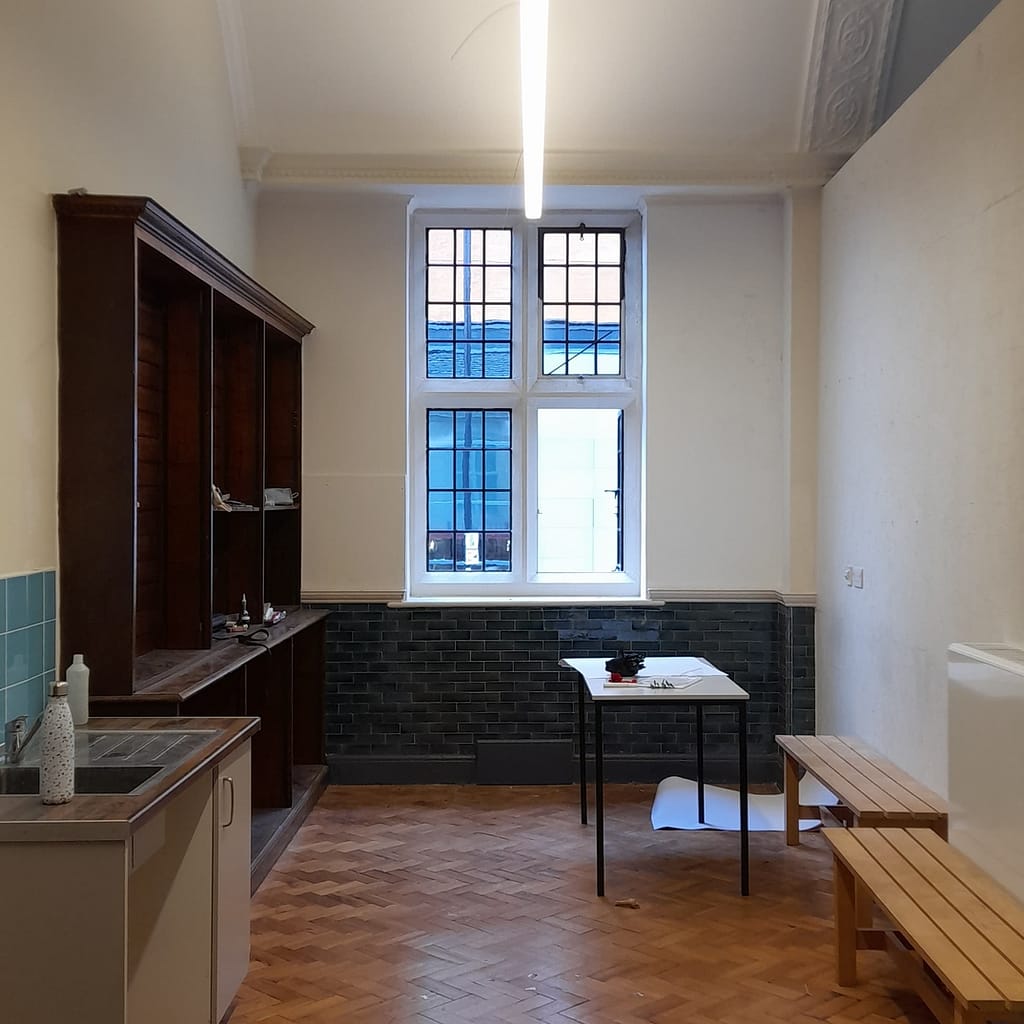
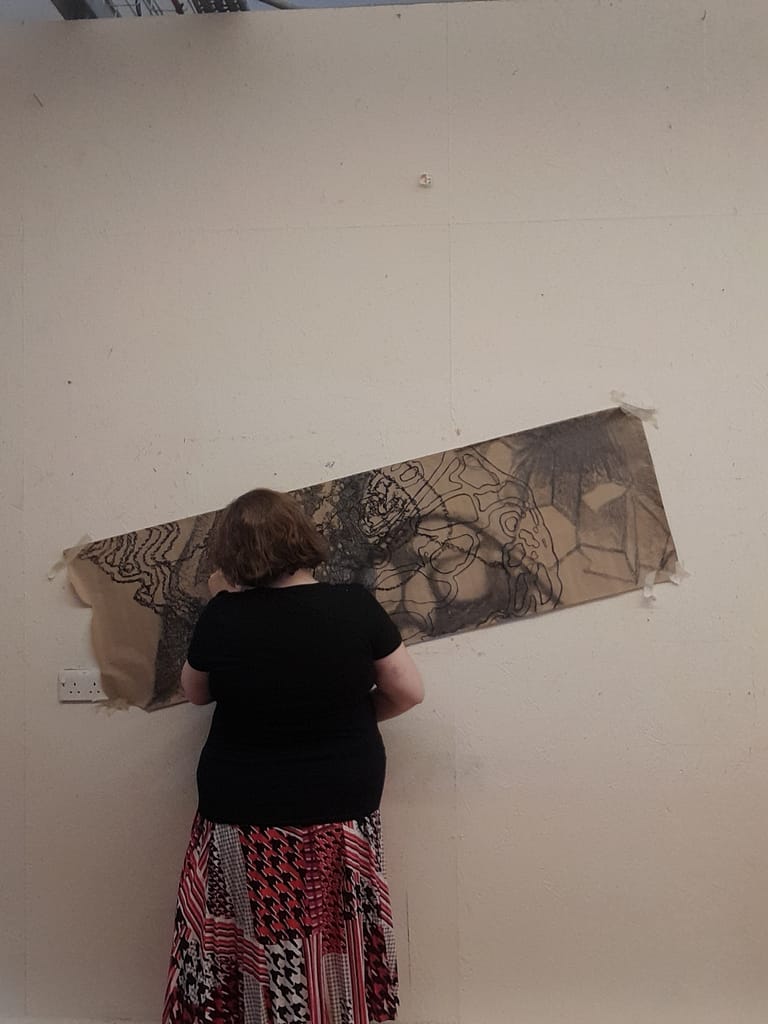
It was great, I could access it 24/7, so spent a few late nights working in there. Whilst I had the (very acoustically satisfying) place to myself, I’d sing as well. Pretty loudly. One night in particular, I felt some sort of entity join me. I cannot express how strongly I felt a presence. I got the impression that it was a gentle, older guy called Robert, who used to come to what-ever-the-building-was in the past, and he enjoyed music, and it was me singing that piqued his curiosity. He watched me draw and I found myself explaining what I was doing between songs. The encounter helped expand my thinking around the definition of ‘non-human’ – spirits and ghosts would count as a naturally-occuring entity right? Could I collaborate with Robert, for example? In that moment I didn’t know how to do that creatively, but enjoyed our intuited conversation and came to the conclusion that a conversation itself is a creative act – sharing a moment, creating something out of nothing… much like Jevbratts ‘overlapping interference patterns’ (2009).
I’m not sure I’ll attempt to work with ghosties for my Final Major Project (at least not actively) because this would need more time than I have to investigate seriously, but it certainly is interesting to consider.
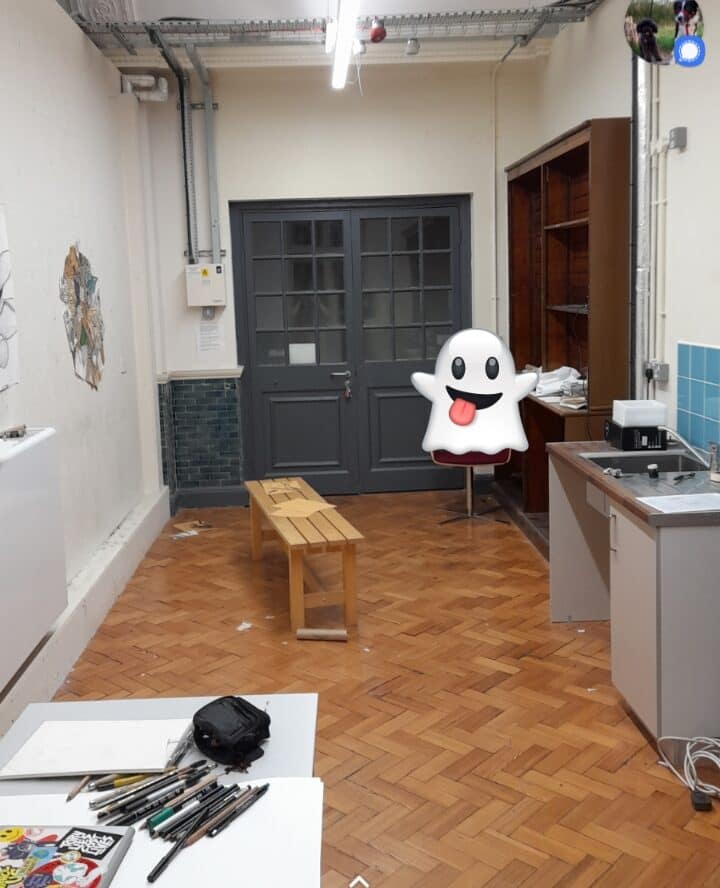
Not actually Robert
I made some larger scale drawings, which truth be told, I spent a lot of time working on despite not really liking them all that much. Why? I just don’t consider them very interesting as drawings, and they were all a bit literal (‘this is a fossil’, ‘ this is sycamore’), or unaccomplished. But it’s okay, they’re just works that I will eventually get around to burying, submerging, exposing etc out to the elements (or set fire to?) – and that’s where the most interesting bit happens. Some of these works may be presented during the Final MA exhibition – we’ll see.
I also made use of the big space by using my projector to experiment with scaling up images. It was effective in some ways (much easier than gridding up) but not in others (could be difficult to see what you were doing if the contrast wasn’t high enough or the image was too pixelated) – but what struck me, and what I felt most weird about, is how energy-intensive using that projector must have been, on for all those hours. It got HOT. It was interesting to me that projecting felt hypocritical – there I am, trying to spread the good word about the planet through art by using a process that actively goes against that ethos? Sure, the energy supplier might be one that uses renewable sources… but that’s no guarantee at all. So yeah, that was interesting. Projecting is very useful for scaling, but I’m not sure this is something I will continue to investigate within my Final Project.
During the second week at TAH, I got access to the photography, print and ceramics studios. I wasn’t feeling photography (chemicals and so on) but threw myself into print and ceramics. The technicians were great, and really supportive.
In the ceramics studio, I honestly spent a lot of time of the potters wheel. I have never had a go on one before, and even though it caused a lot of pain on my back (spinal injury blah blah) and I failed to do anything coherent 70% of the time, I had such a fantastic experience just learning to ‘listen’ to the voice of clay (which of course, comes from the Earth) – and of water, of course. I found it interesting how we consider the Earth to be a solid, immutable entity, yet here was this pliable, earthly being. There was something profound in working with clay that reminded me to not make assumptions about a material (or collaborator). I also considered how ceramics really is a celebration of all of the elements – earth (clay), water (for pliability), air (drying process) and fire (in the kiln). If we were to also consider the fifth Chinese element, metal, that’s arguably represented in the oxides and glaze that gives ceramics their colour.
Anyway, I chose early on to not glaze/colour my pieces, and leave some pieces unfired (for comparison), because I wanted the clay to be porous and susceptible to other non-human collaborators (rain, soil, bugs, whatever). I made some small pots (pinch pots and thrown pots), 10 tiles, a mini figure of my dog, a big solid sphere, and some other bits and bobs. I pressed naturally found objects into the tiles to leave an imprint, which was simple but quite effective. I really appreciate the textures. I also made a small clay ball which I intended to leave out on the apartment balcony to let the rain get at it (pictured above in the metal frame thing)… but my dog (who was with me) stole it and ate half of it. I was pissed for a split-second before realising it was a HNHCC! So I had it fired and it’s one of my most unassuming favourite pieces lol.
I did have a bit of discomfort with the idea of having things fired in the kiln – an EXTREMELY high-energy process.
I like using clay, and is something I would like to explore more in future, but not within my Final Project. I have been researching and exploring drawing as a medium – and yes, I draw in the expanded field, but I feel far too much of a clay-n00b to exhibit ceramic works. I may present some of my test pieces, after they have been collaborated on, however.
The print room was a completely different experience. I had a great time in there, but realised a lot about what I ABSOLUTELY DON’T like, or what DIDN’T feel ethical, or sustainable. Although I felt a bit icky with what I was doing (felt very hypocritical), I allowed myself two days to just learn new techniques and give myself the time to work out what felt uncomfortable, and why that was. Felt much more of a mature, critical approach to things rather than just nope-ing out of it based on assumptions.
Intaglio printing – I love intaglio printing and the effect it makes, I really do. I had a great time trying to crush shit in found in the shared kitchen (rice, lentils, beans, seeds) into the plate, using a printing press, to experiment with another way of including non-human voices … but it didn’t really work unfortunately. You could see vague imprints in the plate itself but it didn’t translate to actual prints. The only parts that worked were the lines I scratched into the plate using a sharp needle. As much as I love intaglio, it feels incredibly wasteful. You slap a load of ink onto the plate, to then rub it all off (leaving ink in the grooves to print with). And then there’s the rags you rub the ink off with, which get inky really quickly, and need to be binned. And then there’s the plastic gloves you need to wear when handling the ink, and the turps you need to clean it up. And the plate itself is made out of plastic. Sure, you get to re-use the plate to make lots of prints, but then what? You can’t reuse it. Wasteful.

Dye sublimation – the macdaddy of unenvironmental printing processes (there’s probably worse ones to be fair, but this one took the piss!). In short, you use special inks on paper, or what-looks-like-coloured-tissue-paper (which you tear up into the shapes you want), sandwich the ink drawing/collage on top of synthetic fabric (doesn’t work well on natural fibres) and stick it in the sublimation press for a minute or so. The press runs at something like 200’C and was on all day to remain hot. So, you’ve got single use tissue-paper things coated in synthetic inks (once the ink transfers off the papers, that’s it, you can’t really use them again), on synthetic (read: plastic) fabrics, being cooked at high temperatures in a high-energy intensive machine. Really effective process, and the outcomes looked BEAUTIFUL, but it felt so environmentally damaging. I felt there was a metaphor there for capitalism at large – great to have and look at, but harmful for the planet.
So yeah, had a great time, but printing just didn’t feel all that ethical to me. I don’t think I’ll be developing print any further in the context of my Final Project, because it just isn’t in keeping with the things I’m exploring. The processes don’t align to a vision of sustainability. I may, however, exhibit some of the prints that I invite the non-human to collaborate on.
And that was essentially my (creative) experience in Wakefield. It was a real exploration of ethics whilst making, and I genuinely felt much more resonance working with clay, and charcoal (whilst drawing) that any other material or process. It’s probably because those things are natural, and have a real ‘voice’ and have something to say. I didn’t connect with anything man-made at all – things felt ‘cold’. This experience helped a lot with my theoretical research, because it brought attention to what was an ethical way to make things, and what isn’t. How can we make art that values and centres the voice of the non-human, without being exploitative or hypocritical?
I felt hypocritical multiple times during this residency… so I wanted to explore that more in theory. And that’s what I ended up doing!
References
Golańska, D. and Kronenberg, A. K. (2020) ‘Creative practice for sustainability: A new materialist perspective on artivist production of eco-sensitive knowledges’, International Journal of Education through Art, 16(3), pp. 303 – 318. doi: 10.1386/eta_00035_1
Jevbratt, L. (2009) Interspecies Field Guide. [ebook] Available at: <http://jevbratt.com/writing/interspecies_field_guide.pdf> [Accessed 26 August 2022]
